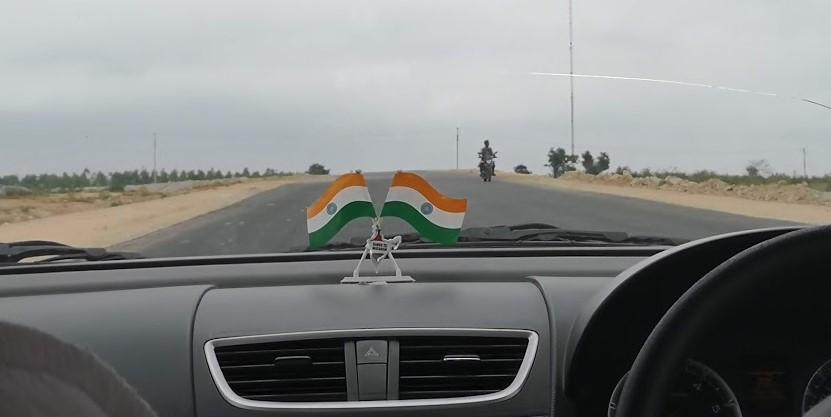Addressing 2019
Time for another annual roundup from the world of IP addresses. Let's see what has changed in the past 12 months in addressing the Internet and look at how IP address allocation information can inform us of the changing nature of the network itself.ETSI Drops 2 MEC Reports Into a Red-Hot Market
The reports cover the impact of “alternative virtualization technologies” and provide a deeper...
Will SD-WAN Solve IoT’s Toughest Questions?
SD-WAN has the potential to address many of IoT's security and operational challenges, says Apcela...
Daily Roundup: Verizon Leads New 5G Group
Verizon to lead new 5G group; Microsoft, NSA warn of "critical" vulnerability; and Red Hat updated...
New Juniper Networks Videos Covering Segment Routing
Juniper recently posted some new videos on their YouTube channel covering Segment Routing. These videos feature my former colleague Ron Bonica as he provides a basic overview of Segment Routing (SR) including key concepts such as paths and segments before diving into how SR simplifies traffic engineering. I definitely recommend checking these out for anyone …Continue reading "New Juniper Networks Videos Covering Segment Routing"
Community Radio and Network Providers Join Force to Grow the Internet

Last month, 40 community radio and network providers from all across Asia-Pacific journeyed by road from Bengaluru, India’s tech capital, to IruWay, a rural research lab about 80km away.

As the traffic and indiscriminate honking outside the megacity faded, Internet signal also weakened, and at some point, there was no connection at all – something that could make Internet-dependent city dwellers queasy. But the 40 participants traveling to attend the Community Network Exchange Asia-Pacific 2019 (CNX APAC) were undeterred. They have built or run radio or Internet networks for unconnected communities in many countries, including Bangladesh, Malaysia, Myanmar, Nepal, the Philippines and Thailand.
The event gathered the two groups, community radio and network providers. It was a bid to get communities that have community radio stations in place to also set up community networks – so that villages unserved by mobile network operators or Internet service providers can access the Internet and the benefits it offers.
Community radio stations play an important role in providing information to rural communities throughout the world. They have expertise in setting up the infrastructure as well as creating local content, both of which are crucial to the success of community networks. It is why the Continue reading
Verizon Launches (Yet Another) 5G Forum
These groups can also muddy the waters by creating competing approaches that reflexively insulate...
Telstra Deepens Equinix Ties, Adds 110 Cloud Interconnects
Telstra’s new API integration with Equinix means its enterprise customers can directly connect to...
Red Hat OpenShift Updates Hit Multi-Cloud, Security
The updates tap into Red Hat's NooBaa acquisition in 2018.
Day Two Cloud 031: Melding Network Automation With CI/CD Pipelines And Infrastructure As Code (Sponsored)
Today's Day Two Cloud episode explores network automation through the lenses of infrastructure as code and CI/CD pipelines. As network automation permeates organizations, does it make sense for network engineers to adopt more developer-like processes, methods, and tools? Can you successfully automate without them? Our guests for this conversation, sponsored by Cisco, are Carl Moberg, Senior Director of Product Management at Cisco; and Kristian Larsson, who has dual roles at Cisco and Deutsche Telekom.Day Two Cloud 031: Melding Network Automation With CI/CD Pipelines And Infrastructure As Code (Sponsored)
Today's Day Two Cloud episode explores network automation through the lenses of infrastructure as code and CI/CD pipelines. As network automation permeates organizations, does it make sense for network engineers to adopt more developer-like processes, methods, and tools? Can you successfully automate without them? Our guests for this conversation, sponsored by Cisco, are Carl Moberg, Senior Director of Product Management at Cisco; and Kristian Larsson, who has dual roles at Cisco and Deutsche Telekom.
The post Day Two Cloud 031: Melding Network Automation With CI/CD Pipelines And Infrastructure As Code (Sponsored) appeared first on Packet Pushers.
AI Automation Startup Zinier Raises $90M
The startup plays heavily in the telecom sector — 80% of its existing customers are in the space,...
Introducing Cloudflare for Campaigns


During the past year, we saw nearly 2 billion global citizens go to the polls to vote in democratic elections. There were major elections in more than 50 countries, including India, Nigeria, and the United Kingdom, as well as elections for the European Parliament. In 2020, we will see a similar number of elections in countries from Peru to Myanmar. In November, U.S citizens will cast their votes for the 46th President, 435 seats in the U.S House of Representatives, 35 of the 100 seats in the U.S. Senate, and many state and local elections.
Recognizing the importance of maintaining public access to election information, Cloudflare launched the Athenian Project in 2017, providing U.S. state and local government entities with the tools needed to secure their election websites for free. As we’ve seen, however, political parties and candidates for office all over the world are also frequent targets for cyberattack. Cybersecurity needs for campaign websites and internal tools are at an all time high.
Although Cloudflare has helped improve the security and performance of political parties and candidates for office all over the world for years, we’ve long felt that we could do more. So today, Continue reading
Google Chrome towards making third party cookies obsolete

Not really. They were forced to by Mozilla and Apple.
The post Google Chrome towards making third party cookies obsolete appeared first on EtherealMind.